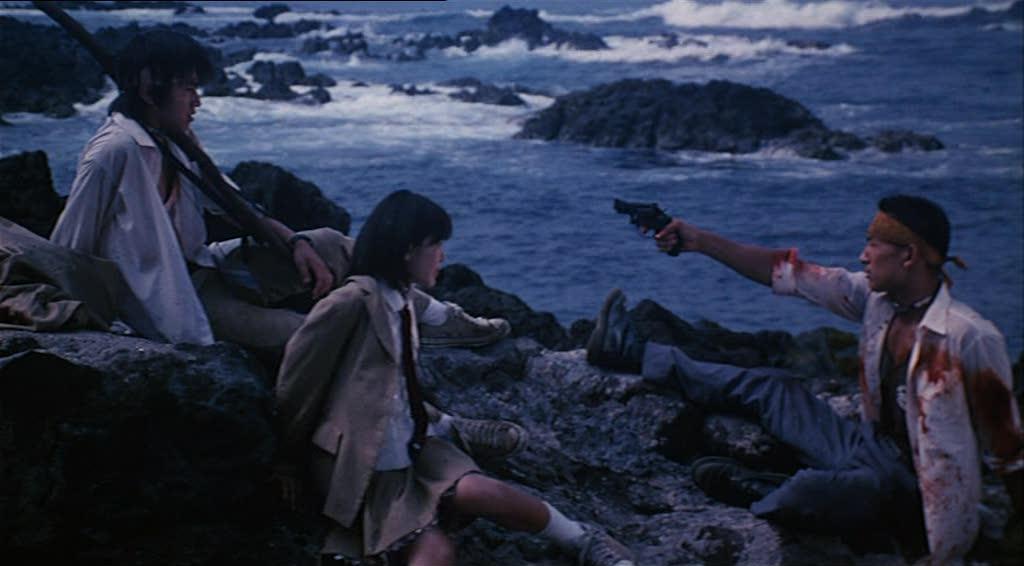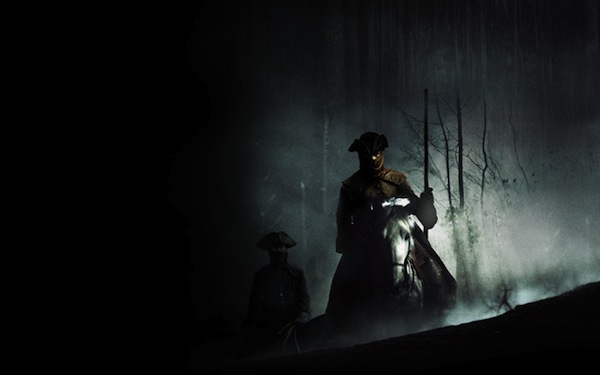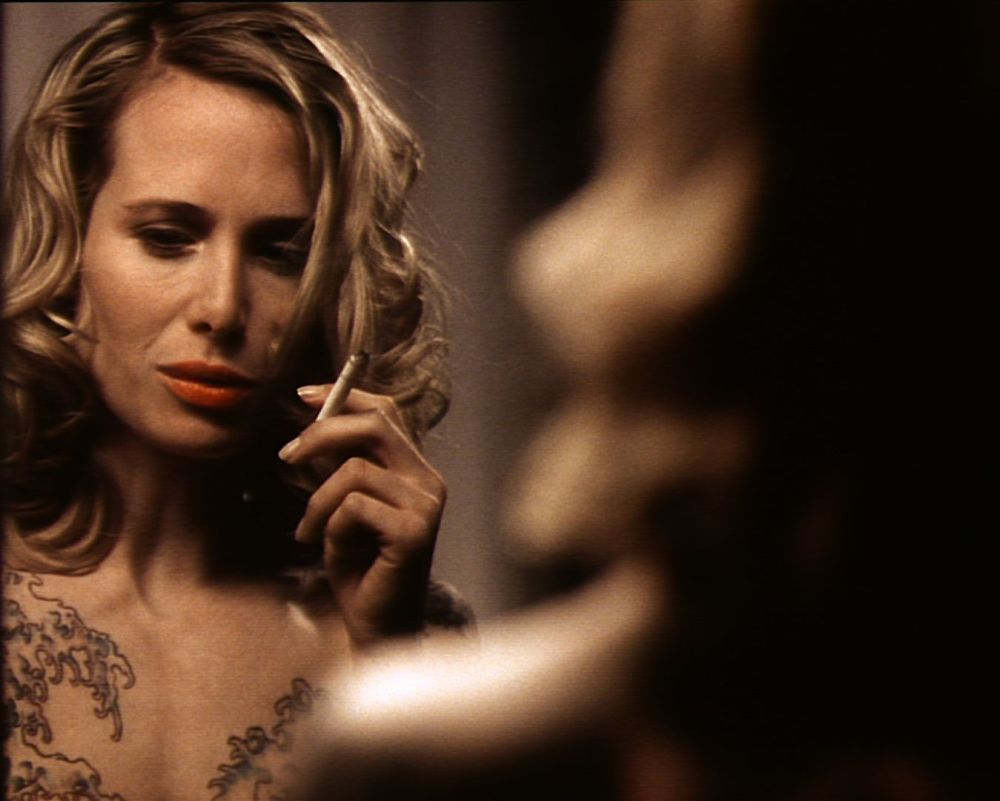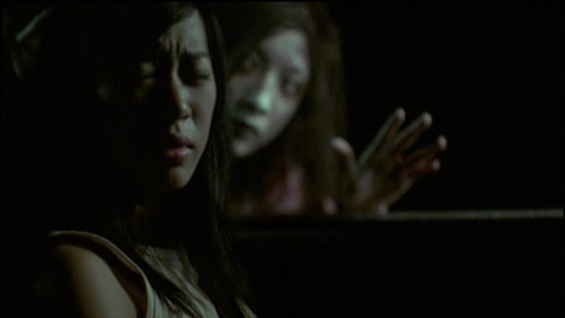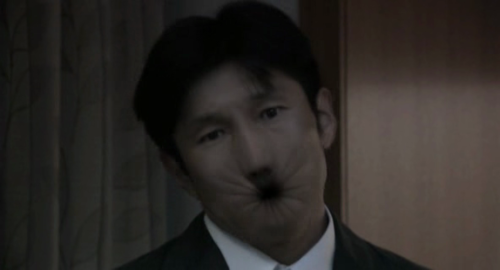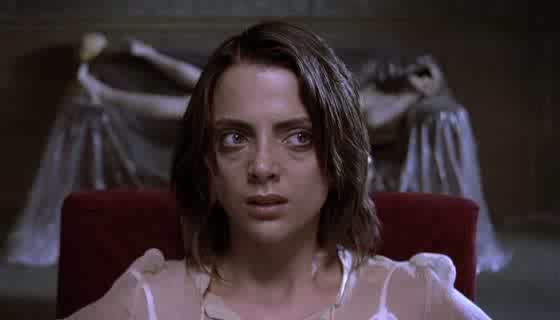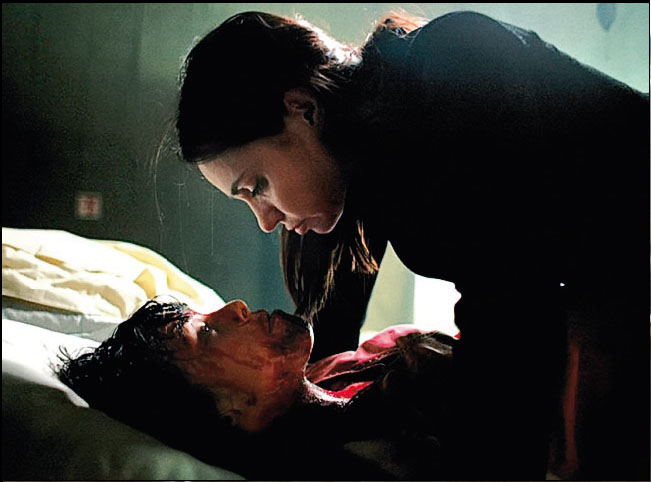11. Battle Royale (Kinji Fukasaku, 2000, Japan)
Screenplay by Kenta Fukasaku based on the Koushon Takami novel
Much has been written about this violent dystopian film about a group of students pitted against each other in a conflict to the death. Few films deserve instant classic status and Battle Royale is one of them, creating a dark and unforgiving cinematic world the makers of the Hunger Games films could only dream of. The less said about the incredibly disappointing 2003 sequel the better.
12. Brotherhood of the Wolf (Christophe Gans, 2001, France)
Screenplay by Gans & Stephane Cabel
Co-screenwriter/director Gans successfully combines creature feature elements with martial arts action in this very entertaining historical horror/fantasy. Actors Samuel Le Bihan and Mark Dacascos make a pair of formidable protagonists as investigators sent to investigate a series of brutal, animalistic killings and Vincent Cassel turns in a highly memorable supporting performance.
Gans tried and failed to make the 2006 video game adaptation Silent Hill seem like a feature film and has been attempting for years to get his version of Fantomas to the big screen starring Vincent Cassel and Mark Dacascos. His most recent film, a version of the classic fantasy tale Beauty and the Beast starring Cassel is currently being met with mixed reviews.
13. Tattoo (Robert Schwentke, 2002, Germany)
Screenplay by Schwentke
An oversight on my part resulted in this grim gem not being included in my article The 20 Best Neo-Noir Films of the 2000s but since, like its Seven-inspired brethren mentioned in the above introduction, it also exists in the world of psychopath horror cinema, I can make up for that error here.
A veteran detective played by Christian Redl teams up with a much younger detective played by August Diehl to investigate a series of killings involving the removal of elaborate tattoos from the victims. Inexplicably never given a DVD release in America, the dark and atmospheric Tattoo deserves much more notice. Actor August Diehl is best known to American film audiences as the SS officer who blows the cover of Michael Fassbender’s character in the best scene in Quentin Tarantino’s Inglourious Basterds (2009).
On the basis of his impressive feature debut Tattoo, screenwriter/director Schwentke went on to become a major hired gun director in the American film industry with credits including Flightplan (2005), Red (2010) and RIPD (2013).
14. Shutter (Banjong Pisanthanakun & Parkpoom Wongpoom, 2004, Thailand)
Screenplay Pisanthanakun & Wongpoom & Sopon Sukdapisit
Shutter is a true standout in the New Wave of Thai horror that includes the Art of the Devil trilogy (2004, 2005, 2008), Piyapak Choopetch’s Necromancer (2005) and Pakpoom Wongjinda’s Scared (2005). A couple flees the scene of a collision with a young woman on the way home from a party then start to experience unexplained events that suggest the hit and run victim’s ghostly presence.
The synopsis might make Shutter sound like a run of the mill Asian ghost film but it isn’t. This one has a fresh and very disturbing take on its haunting and an ending that easily rivals the legendary finale of Hideo Nakata’s Ringu. Pisanthanakun and Wongpoon re-teamed for the highly regarded but little-seen supernatural film Alone in 2007. A softened American remake of Shutter appeared in 2008. The original Shutter is the long-haired ghost girl movie for people who don’t like long-haired ghost girl movies.
15. 13: Game of Death (Chookiat Sakveerakul, 2006, Thailand)
Screenplay by Sakveerakul & Eakasit Thairatana
Another standout in the Thai New Wave of horror cinema, 13: Game of Death is the fascinating story of a desperate man deep in debt who receives phone calls promising him large sums of money if he can complete 13 tasks that become increasingly challenging and dangerous. Some of the tasks seem deceptively simple but take dark, unexpected turns that draw the viewer such as the lead character’s stringing of a wire across a country road. The inevitable American remake called 13 Sins came out in 2014, directed by The Last Exorcism director Daniel Stamm.
16. Nightmare Detective (Shinya Tsukamoto, 2006, Japan)
Screenplay by Tsukamoto & Hisakatsu Kuroki
Multi-talented filmmaking maverick Tsukamoto takes a rare stab at overtly commercial genre cinema-that’s not a negative label, it’s just not the director’s usual stomping ground-and succeeds in making a unique film that does not sacrifice Tsukamoto’s trademark bizarre vision in order to create a conventional narrative.
Ryuhei Matsuda delivers an intense and committed performance as a young man with the ability to enter people’s dreams. This puts him on a collision course with a killer with similar skills played by Tsukamoto. One of the most compelling aspects of the film is the portrayal of the toll entering the minds of other people has on Matsuda’s character including an attempt at suicide.
The film also contains the incredibly beautiful image of Matsuda’s character passing out of the varied landscapes of the dream world back into reality and finding himself underwater, poised on the exposed tail of a sunken airplane. There was talk of an American remake of Nightmare Detective around the time of its initial festival run and Tsukamoto reunited with Matsuda for a little-seen sequel in 2008.
17. To Let (Jaume Balaguero, 2006, Spain)
Screenplay by Balaguero & Alberto Marini
Perhaps best described as a rural massacre film set in an apartment building, To Let is the story of a married couple looking into an old building in an abandoned neighborhood with disastrous results. Easily the best of a series of six Spanish television films made under the umbrella title Films to Keep You Awake, To Let sees screenwriter/director Balaguero rebound in a big way after the uneven and unsatisfying horror films Darkness (2002) and Fragile (2005) that followed in the wake of his excellent first feature The Nameless (1999).
Balaguero’s obsession with creepy apartment buildings that are the settings for three more of his films on this list seems to have started with this film, providing the talented director with a real home for his unique brand of claustrophobic horror.
18. Inside (Alexandre Bustillo & Julien Maury, 2007, France)
Screenplay by Bustillo & Maury
The puzzling international success of Alexandre Aja’s nonsensical High Tension (2003) ignited a boom in French horror film production and Inside remains the king of that wave. A pregnant woman who lost her husband in a car accident played by Alysson Paradis is attacked in her home by a mysterious woman played by Beatrice Dalle resulting in a gruesome game of cat and mouse.
Screenwriters/directors Bustillo and Maury display tremendous talent in their first feature film as they manage to make a film that is highly suspenseful while being almost jaw-droppingly violent. Lots of credit also goes to the film’s highly underrated cinematographer Laurent Bares whose work gives the film a uniquely dark and palpably gloomy atmosphere.
Bustillo and Maury made the horror-fantasy Livid (2011), which remains little-seen outside of festivals since its rights were purchased for an American remake. Their latest horror film Among the Living is currently making the festival rounds and the duo also created a segment for the upcoming horror anthology The ABCs of Death 2.
19. REC (Jaume Balaguero & Paco Plaza, 2007, Spain)
Screenplay by Balaguero & Plaza & Luis Berdejo
20. REC 2 (Jaume Balaguero & Paco Plaza, 2009, Spain)
Screenplay by Balaguero & Plaza & Manu Diez
Screenwriter/director Balaguero’s fixation on apartment buildings that began with 2006’s To Let continues with these spectacular found footage horror films he made with co-director Paco Plaza. The first film is the story of a news crew and a group of firefighters who become trapped in an apartment building wherein a rapidly spreading infection is transforming the residents into aggressive, mindless killers. Following REC’s critical and commercial success, Balaguero and Plaza set the sequel literally minutes after the events of the first film and create the greatest found footage horror film of all time.
The first film suggests the infection may have an origin beyond simple human biology and REC 2 takes this idea and exploits it fully, allowing Balaguero to successfully channel bits of one of his favorite horror films William Friedkin’s The Exorcist (1973) into the sequel. Paco Plaza took solo director’s chair for the much less well-received REC 3: Genesis (2012) and Balaguero directs the soon to be released franchise finale REC 4: Apocalypse. REC was remade in almost carbon copy fashion in America as The Dowdle Brothers’ Quarantine (2008).
